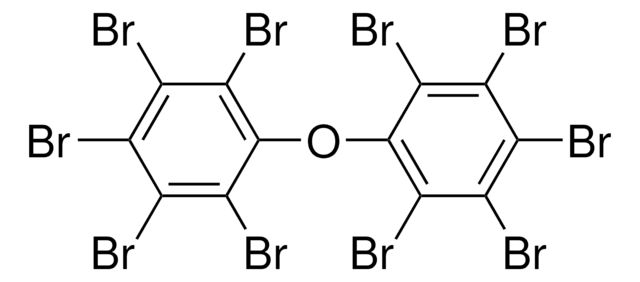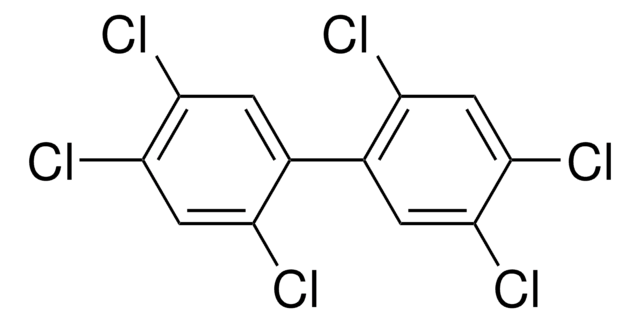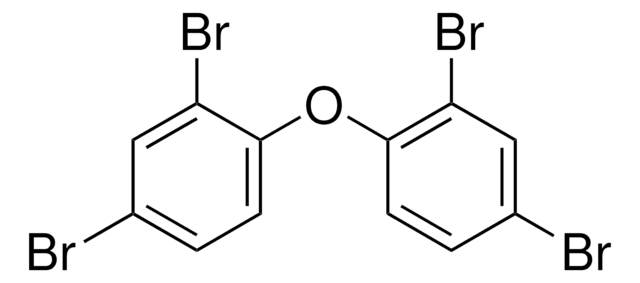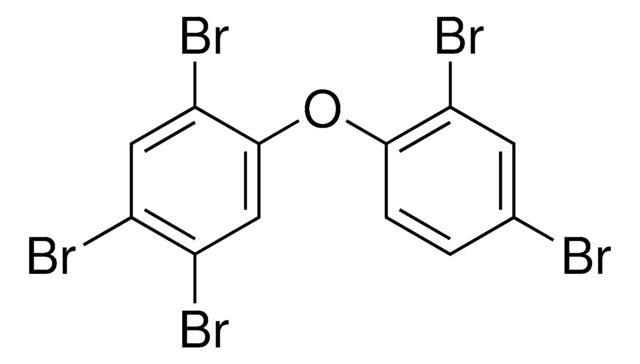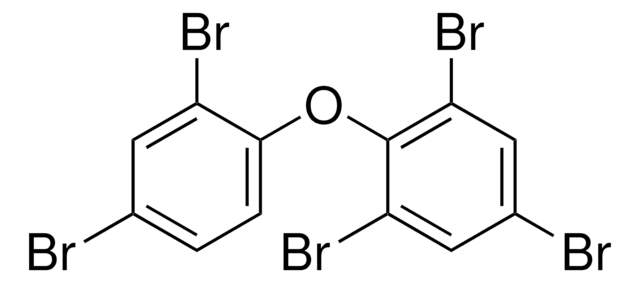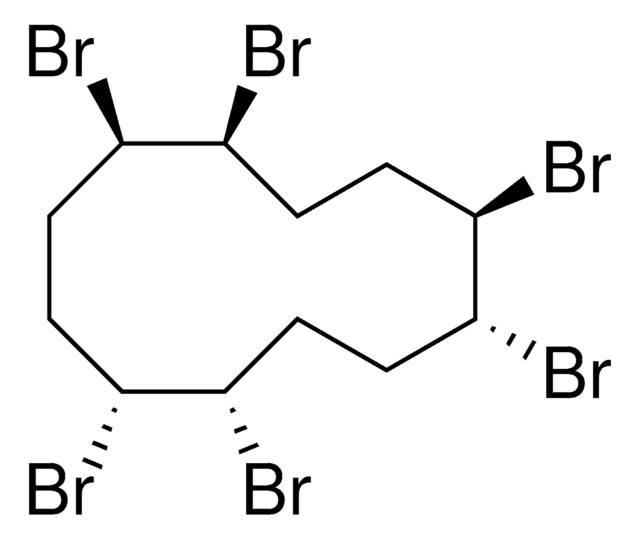91408
BDE No 37
analytical standard
Synonyme(s) :
3,4,4′-TriBDE, 3,4,4′-Tribromodiphenyl ether
About This Item
Produits recommandés
Qualité
analytical standard
Niveau de qualité
Pureté
≥98.0% (GC)
Durée de conservation
limited shelf life, expiry date on the label
Pf
48-52 °C
Format
neat
InChI
1S/C12H7Br3O/c13-8-1-3-9(4-2-8)16-10-5-6-11(14)12(15)7-10/h1-7H
Clé InChI
YALAYFVVZFORPV-UHFFFAOYSA-N
Produits recommandés
Mention d'avertissement
Danger
Mentions de danger
Conseils de prudence
Classification des risques
Aquatic Acute 1 - Aquatic Chronic 1 - Eye Dam. 1
Code de la classe de stockage
11 - Combustible Solids
Classe de danger pour l'eau (WGK)
WGK 3
Point d'éclair (°F)
Not applicable
Point d'éclair (°C)
Not applicable
Choose from one of the most recent versions:
Certificats d'analyse (COA)
Don't see the Right Version?
If you require a particular version, you can look up a specific certificate by the Lot or Batch number.
Déjà en possession de ce produit ?
Retrouvez la documentation relative aux produits que vous avez récemment achetés dans la Bibliothèque de documents.
Notre équipe de scientifiques dispose d'une expérience dans tous les secteurs de la recherche, notamment en sciences de la vie, science des matériaux, synthèse chimique, chromatographie, analyse et dans de nombreux autres domaines..
Contacter notre Service technique
